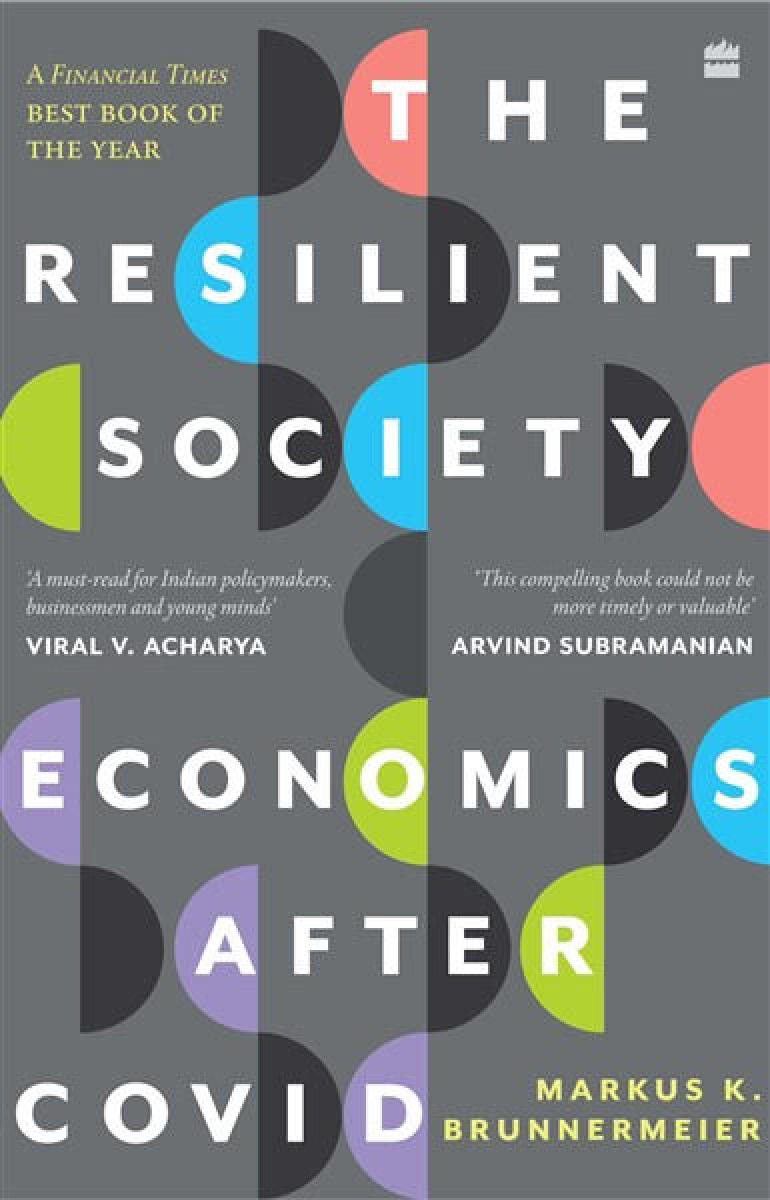Book Review: The Resilient Society
The following is a lightly edited version of a review of The Resilient Society by Markus Brunnermeier (originally published in India Today a couple of weeks ago).
The devastating spread of the novel coronavirus has had dramatic effects on economic and social life. It has also had an impact on the direction of scientific research. In this wide-ranging book, Markus Brunnermeier argues that the discipline of economics should pay closer attention to the concept of resilience, defined as the capacity of a system to rebound quickly “like a trampoline” from large and unexpected adverse shocks.
In a resilient society, argues Brunnermeier, we can “take more chances and embrace more opportunities—because the shocks will be less detrimental.” Several existing institutions—such as bankruptcy protection for individuals, limited liability for corporations, and non-recourse loans for home purchases—are designed with precisely this reasoning in mind. Brunnermeier would like us to go much further. He wants our infrastructure, production systems, financial architecture, and social safety nets built “with redundancies, buffer stocks, duplications… and added capacities,” even when this requires some loss of efficiency or profitability. For instance, firms currently source critical inputs—such as semiconductors for the production of motor vehicles—from the lowest cost producers globally, and schedule deliveries based on a “just in time” principle. An unanticipated interruption in supply can then cause an entire industry to be severely disrupted. Brunnermeier argues for a “just in case” approach instead, which involves holding redundant buffer stocks and sourcing from a diverse array of suppliers, even if this is costlier under ordinary economic conditions.
But how might households and firms be induced to take actions that they would otherwise prefer not to take, in order that the system as a whole becomes more resilient? Here, Brunnermeier provides few concrete answers, other than to recognize that the solution involves both markets and government, and that such coordination is best achieved when “society is fair and… inequalities are kept in check.” In the author’s own words, the book is an “interim synthesis” so the absence of specific policy proposals is understandable. But it would have been worth considering, for example, whether federal deposit insurance or bailouts of systemically important firms in finance and manufacturing enhance or erode resilience, and whether policies such as a universal basic income or individual accounts at the Fed could better protect households in the face of a crisis.
Much of the book deals with pandemic related policies. Brunnermeier points out that the costs of a general lockdown were extremely large, amounting to about $80 billion dollars per week in the US alone. In addition, it has become apparent that the closure of schools has led to significant learning loss, while exacerbating existing inequalities. Were better alternatives available? He argues that a targeted lockdown, coupled with a large-scale testing program to identify infectious individuals, would have achieved better outcomes at substantially lower cost. This is consistent with the Roadmap to Pandemic Resilience published by an interdisciplinary and bipartisan team assembled by Danielle Allen during the early stages of the pandemic.
One quibble I have with the book is that it neglects to mention relevant prior work. The most glaring omission is of Hyman Minsky, who devoted much of his professional life to the study of economic resilience. Minsky argued, paradoxically, that stability itself was destabilizing, since it allowed those with the smallest margins of safety to prosper. Not only does Minsky’s work speak to the main issues with which this book is concerned, it goes further in developing an ecological understanding of financial practices, and in formulating concrete proposals for action. Yet, Minsky is mentioned just once, and in passing.
That said, this is an important book. Its relevance can be appreciated by considering the case of Sri Lanka, which managed to weather a protracted civil war, a global financial crisis, and the coronavirus pandemic, without once defaulting on its foreign debt. Then, in April 2022, the country failed to make a scheduled payment to its creditors, and is now formally in default for the first time in its history. The war in Ukraine is affecting food security worldwide, and these effects are being compounded by climate change. India, the world’s second largest producer of wheat, has suspended most exports of the grain in the face of a punishing heat wave and fears of a decline in yields. Our vulnerabilities to large shocks, both anticipated and unimagined, are more apparent than ever. Brunnermeier’s case that we need to better understand and build resilience is accordingly correct, convincing, and timely.




